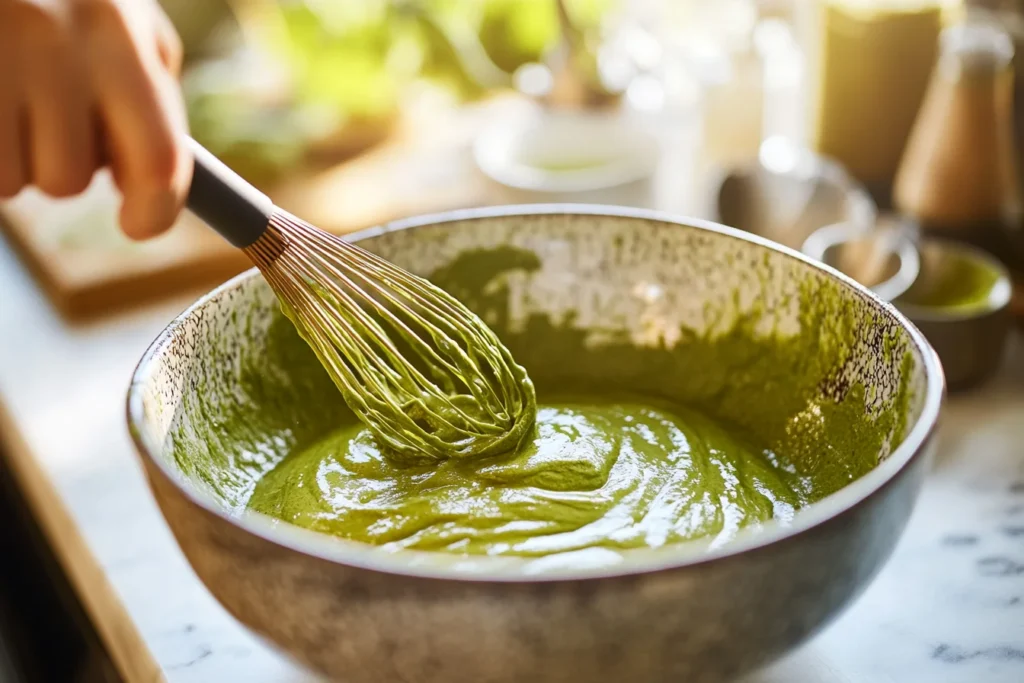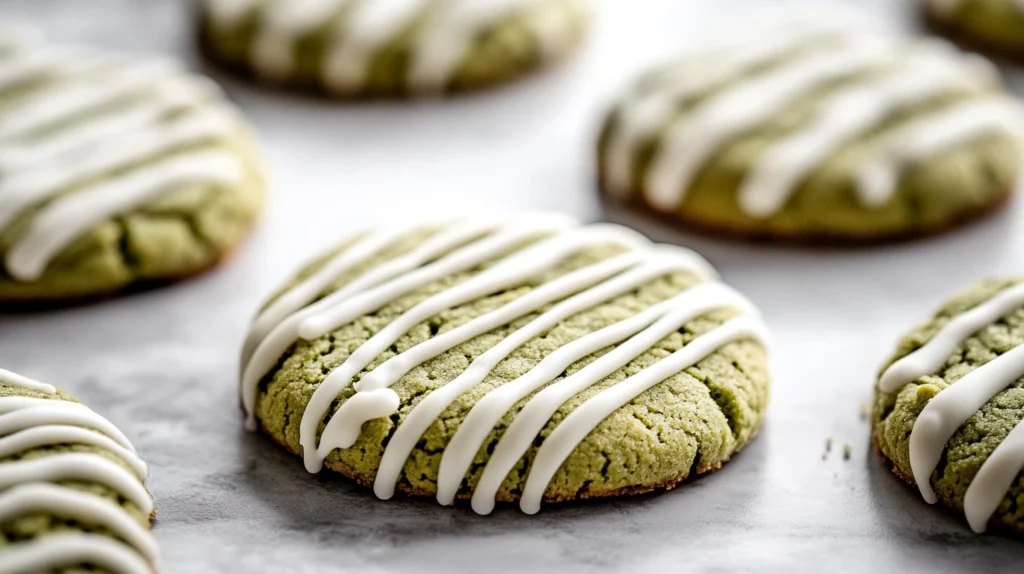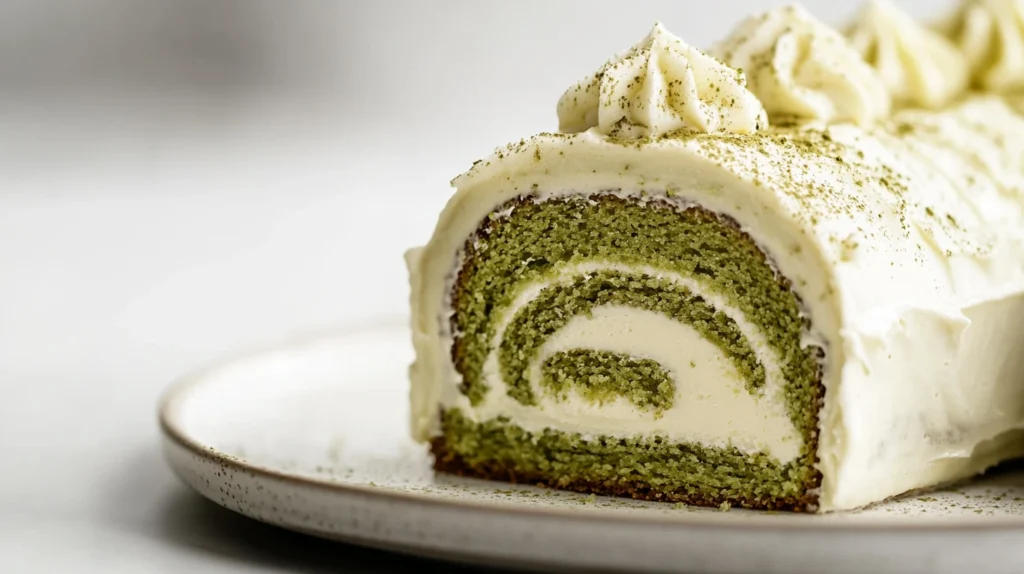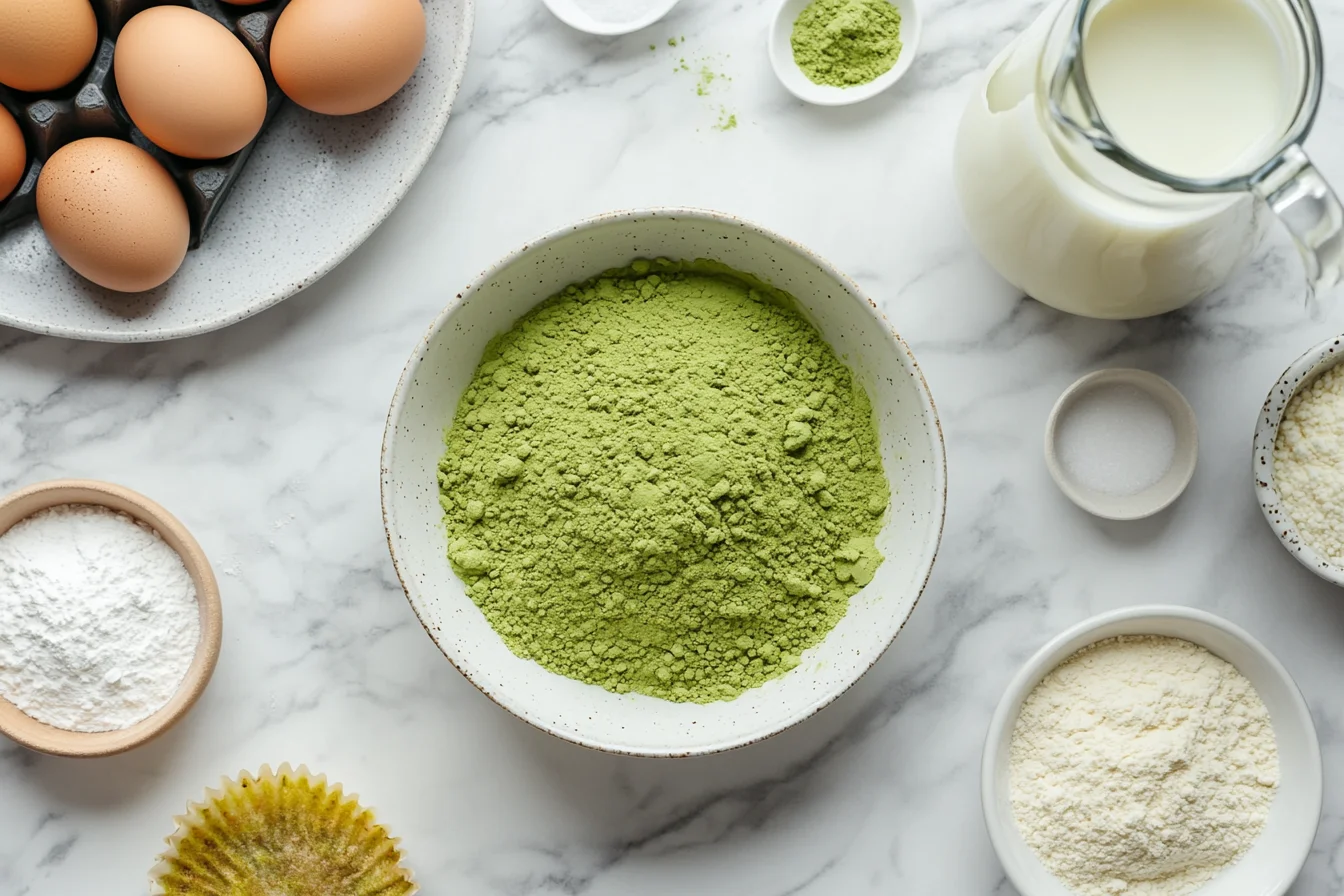Matcha, the vibrant green powder originating from Japan, is making waves in the culinary world, especially in baking. With its earthy flavor, rich nutritional profile, and eye-catching color, matcha has become a go-to ingredient for both amateur and professional bakers. This article explores what matcha does in baking, its unique properties, and practical tips for using it effectively in desserts. From enhancing flavor and texture to offering health benefits, let’s dive into the green magic of matcha.
What Does Matcha Do in Baking?
Matcha adds a unique twist to baked goods by transforming their flavor, texture, and visual appeal. When you incorporate matcha into your recipes, you’re not just adding an ingredient—you’re elevating the entire experience of your dessert. But what makes it so special?
What is Matcha?
Matcha is a finely ground powder made from specially grown green tea leaves. Unlike traditional teas where you steep the leaves and discard them, matcha allows you to consume the entire leaf, packing in more nutrients. Its origins trace back centuries to Japan, where it was revered for its ceremonial uses and health benefits. Today, matcha comes in two main grades—ceremonial and culinary. For baking, culinary-grade matcha is preferred because it’s designed to blend seamlessly into recipes without overpowering other flavors.
How Matcha Transforms Flavor and Texture in Baking
Matcha brings a complex flavor profile to baked goods. Its earthy, umami notes balance the sweetness of sugar, creating a harmonious blend that’s neither too bitter nor overly sweet. Additionally, matcha can slightly alter the texture of your desserts, adding a delicate richness. Cakes feel fluffier, cookies have a melt-in-your-mouth quality, and pastries boast an extra layer of sophistication. Isn’t it fascinating how one ingredient can do so much?
Enhancing Visual Appeal with Matcha
One of matcha’s standout features is its vibrant green hue. This natural coloring agent makes cakes, cookies, and muffins visually striking. Unlike artificial dyes, matcha’s color doesn’t just please the eyes—it tells a story of authenticity and health. However, baking can dull its brilliance, so handling it carefully, as we’ll discuss later, ensures your desserts maintain their bold green appeal.
A Nutritional Powerhouse in Every Bite
When you bake with matcha, you’re not just creating delicious desserts—you’re making them healthier. Packed with antioxidants, catechins, and natural energy boosters, matcha offers numerous health benefits. It’s no wonder health-conscious bakers swear by it. Adding matcha to baked goods doesn’t just make them indulgent; it makes them nourishing too.
Understanding Matcha – Types and Uses
What Are the Different Types of Matcha?
Matcha comes in two primary grades: ceremonial and culinary. Understanding these types is crucial for selecting the right one for baking.
- Ceremonial Matcha: This grade is the highest quality and is traditionally whisked with water for drinking. It has a smooth, delicate flavor and a vibrant green color, but it’s not ideal for baking because its subtleties can be lost in the baking process.
- Culinary Matcha: Specifically made for cooking and baking, culinary-grade matcha has a stronger, more robust flavor. It’s designed to hold its own when combined with other ingredients like flour, sugar, or chocolate.
When baking, always opt for culinary-grade matcha. Not only is it more affordable, but it’s also specifically formulated to bring out its best in baked recipes.
How to Choose Quality Matcha for Baking
Not all matcha is created equal. Selecting a good-quality culinary matcha ensures your baked goods have the perfect balance of flavor, color, and aroma. Here’s what to look for:
- Color: High-quality matcha should have a bright, vibrant green hue. Dull or yellowish tones indicate poor quality or oxidation.
- Texture: The powder should feel fine and silky to the touch, almost like talcum powder. Grainy matcha can lead to clumps in your recipes.
- Packaging: Look for airtight containers that protect matcha from light and moisture. Matcha oxidizes quickly, which can dull its color and taste.
Pro Tip: Buy matcha in small quantities and store it in the refrigerator to keep it fresh for longer!
Why the Right Matcha Matters in Baking

Using subpar matcha can result in baked goods with a murky color and overpowering bitterness. Choosing high-quality culinary matcha ensures:
- A vibrant, appealing appearance.
- Balanced flavor that complements other ingredients.
- Smooth texture without unpleasant grittiness.
For a deeper dive into matcha selection, read this guide on matcha for healthy baking.
Matcha’s Role in Flavor Pairings
Matcha pairs beautifully with a variety of flavors, making it versatile for bakers. Popular pairings include:
- Vanilla: Enhances matcha’s sweetness.
- Citrus (lemon or orange): Brightens its earthy tones.
- Chocolate: Deepens the flavor, creating a decadent combination.
Understanding these pairings opens the door to experimenting with matcha in unique ways.
Matcha’s Role in Baking
The Science of Matcha in Baking
When you add matcha to baked goods, it doesn’t just sit there looking pretty. The way matcha interacts with other ingredients makes a big difference in the final product. Let’s explore how this magic works.
- Flavor Interaction: Matcha’s natural bitterness balances sweet ingredients like sugar or honey. This creates a well-rounded flavor profile in desserts, ensuring they’re not overly cloying.
- Impact on Texture: Matcha powder is finely milled, so it blends seamlessly into batters and doughs, preventing graininess. It also absorbs moisture, which can make cakes fluffier or cookies softer.
- Stabilizing Properties: Matcha can act as a mild thickener, stabilizing batters and helping dough hold its shape during baking.
When combined with fats like butter or oils, matcha’s flavor becomes smoother and more palatable, making it a versatile ingredient for a range of recipes.
How Matcha Enhances the Flavor of Desserts
Matcha’s unique flavor—earthy, umami-rich, and slightly bitter—sets it apart from other ingredients. In baked goods, it:
- Balances Sweetness: If you’ve ever found traditional desserts too sugary, matcha’s subtle bitterness cuts through that sweetness.
- Adds Complexity: Matcha’s umami flavor deepens the taste of desserts, giving them a sophisticated edge.
- Compliments Other Ingredients: From vanilla to cream cheese, matcha complements a variety of flavors without overpowering them.
For instance, in a matcha cheesecake, the green tea powder enhances the creaminess and richness of the filling while balancing the sweetness of the crust.
Why Matcha’s Color Is a Baker’s Dream
The vibrant green hue of matcha creates visually stunning desserts. But this color isn’t just for aesthetics—it’s a signal of its freshness and quality. To retain its brightness:
- Bake at Lower Temperatures: High heat can dull matcha’s green color.
- Use Fresh Matcha: Older powders lose their vibrancy.
- Avoid Overmixing: Excess mixing introduces air, which can oxidize the matcha and fade its color.

When done right, matcha gives cakes, cookies, and muffins a natural, eye-catching pop of green—perfect for impressing guests or creating Instagram-worthy treats.
Health Benefits in Every Bite
Unlike artificial food colorings, matcha doesn’t just make desserts look appealing; it also packs a punch of antioxidants and nutrients. With every bite, you’re enjoying a treat that’s both indulgent and nourishing.
Baking with Matcha – Techniques and Tips
Popular Matcha Recipes for Bakers
Matcha has found its way into countless desserts, each showcasing its unique flavor and color. Whether you’re a seasoned baker or just starting out, these matcha recipes are perfect for experimenting in the kitchen:
- Matcha Cookies: Crisp on the outside and chewy on the inside, these cookies are a delightful balance of sweet and earthy. Add white chocolate chips for an extra layer of sweetness.

- Matcha Cheesecake: A luscious dessert that combines the creaminess of cheesecake with the rich, umami flavor of matcha. The vibrant green hue makes it an eye-catching treat for any occasion.
- Matcha Muffins: Soft, moist, and slightly sweet, matcha muffins are perfect for breakfast or an afternoon snack. Pair them with citrus zest for added brightness.
- Matcha Swiss Roll: A light and airy sponge cake filled with whipped cream infused with matcha. This dessert is as elegant as it is delicious.

- Matcha Bread: Whether in a swirl loaf or steamed buns, matcha adds depth and color to bread recipes.
Each recipe showcases matcha’s versatility and ability to elevate even the simplest of baked goods.
Tips for Perfectly Incorporating Matcha into Recipes
Getting the most out of matcha in baking requires a few simple yet crucial techniques. These tips ensure your desserts look and taste their best:
- Sift Matcha Powder: Matcha tends to clump, so sifting it before adding it to your recipe helps evenly distribute the flavor and color.
- Blend with Dry Ingredients: Mixing matcha with flour or sugar prevents uneven streaks in your batter.
- Control the Amount: Too much matcha can overpower the dish, making it bitter. Start with 1–2 teaspoons and adjust according to taste.
- Adjust Sugar Levels: Since matcha is naturally bitter, increasing sugar slightly can help balance the flavors without making the dessert overly sweet.
- Store Properly: Keep matcha in an airtight container, away from light and moisture, to maintain its color and freshness.
Troubleshooting Common Matcha Baking Problems
Even experienced bakers encounter challenges when using matcha. Here’s how to fix the most common issues:
- Clumpy Batter: This happens when matcha isn’t sifted or blended properly. To fix it, whisk the batter vigorously or strain it through a fine sieve.
- Faded Color: If your desserts lose their vibrant green hue, try baking at a lower temperature or shortening the baking time.
- Overpowering Bitterness: If the matcha flavor is too strong, reduce the amount and pair it with sweeter ingredients like vanilla or cream.
- Flat Desserts: Matcha can sometimes weigh down batters. Ensure you’re using the right leavening agents, such as baking powder or soda, for proper rise.
By following these tips, your matcha creations will be as flawless as they are delicious.
Health Benefits of Baking with Matcha
Matcha’s Nutritional Benefits
When you incorporate matcha into your baking, you’re not just adding flavor and color—you’re also boosting the nutritional value of your desserts. Here’s a breakdown of the benefits:
- Rich in Antioxidants: Matcha is loaded with catechins, particularly EGCG (epigallocatechin gallate), which help combat free radicals and reduce oxidative stress.
- Natural Energy Boost: Unlike coffee, matcha provides a sustained energy boost without the jitters, thanks to its combination of caffeine and L-theanine, an amino acid that promotes calmness.
- Supports Metabolism: Studies suggest that matcha may enhance fat oxidation, making it a popular choice for those seeking a healthier lifestyle.
- Detoxifying Properties: Matcha is high in chlorophyll, which helps detoxify the body by binding to toxins and aiding in their elimination.
Adding matcha to your baked goods turns them into functional treats—indulgent yet packed with health-boosting properties.
How Matcha Baking Fits Into a Healthy Lifestyle
In today’s health-conscious world, matcha fits seamlessly into various dietary preferences. Its versatility allows bakers to create treats that cater to a range of needs, including:
- Lower Sugar Alternatives: Matcha’s natural bitterness reduces the need for excessive sugar, making desserts less sweet but more flavorful.
- Gluten-Free Recipes: Matcha pairs well with almond or coconut flour, enabling gluten-free baking options.
- Vegan Desserts: Combine matcha with plant-based ingredients like almond milk, flax eggs, or coconut cream to create delicious vegan desserts.
- Low-Calorie Treats: Since matcha is naturally low in calories, it’s a great addition to light and airy desserts like soufflés or meringues.
When used thoughtfully, matcha can transform baked goods into healthier versions without compromising on flavor or aesthetics.
Matcha for Mind and Body Wellness
Baking with matcha doesn’t just nourish your body—it also has benefits for your mind. The act of baking itself can be therapeutic, and matcha’s calming properties, thanks to its L-theanine content, enhance that experience. Imagine whisking matcha into a bowl of fluffy batter, feeling more grounded with each step—it’s like a mini meditation session in your kitchen!
Frequently Asked Questions About Baking with Matcha
What kind of matcha is best for baking?
Culinary-grade matcha is the best option for baking. It has a stronger flavor and a more affordable price than ceremonial-grade matcha. The bold taste stands up well in recipes with multiple ingredients, ensuring your baked goods still carry that distinct matcha essence.
Does matcha lose its nutrients when baked?
While some nutrients in matcha, like its antioxidants, may slightly degrade under high heat, the majority remain intact. Baking at lower temperatures (below 350°F) and shorter times helps preserve its nutritional value. Even when baked, matcha retains enough of its health-boosting properties to make it a beneficial ingredient in desserts.
How do I store matcha for baking purposes?
Matcha is sensitive to light, air, and moisture. To maintain its quality:
- Store it in an airtight container.
- Keep it in a cool, dark place or the refrigerator.
- Use it within 1–2 months after opening for optimal freshness.
Proper storage ensures the vibrant green color and rich flavor of your matcha remain intact.
Can I substitute matcha for cocoa powder?
Yes, matcha can be used as a substitute for cocoa powder in recipes, though the flavor profile will be vastly different. For a one-to-one replacement, remember to adjust the sweetness since matcha is naturally bitter. This works well in recipes like cookies, cakes, or lattes where you want to experiment with matcha’s unique taste and color.
Is matcha safe for children in baked goods?
Yes, matcha is generally safe for children when used in moderation. However, since matcha contains caffeine, keep the amount small to avoid overconsumption. Baking disperses the matcha throughout the dessert, so the caffeine content per serving is relatively low.
How can I prevent clumps when using matcha?
Matcha clumps easily due to its fine texture. To prevent this:
- Sift the matcha before adding it to your recipe.
- Whisk it with a small amount of liquid (like milk or water) to create a smooth paste before mixing it into batters or doughs.
These steps ensure a uniform distribution of flavor and color in your baked goods.
Why You Should Start Baking with Matcha Today
Baking with matcha isn’t just about creating desserts—it’s about embracing a unique ingredient that combines flavor, aesthetics, and health benefits. Whether you’re an experienced baker or a curious beginner, incorporating matcha into your recipes can take your creations to the next level.
A Flavor Revolution
Matcha introduces a distinct earthy, umami taste that balances sweetness, offering a sophisticated alternative to traditional dessert flavors. This makes it perfect for those looking to experiment with exciting new recipes or reduce sugar without sacrificing taste.
A Visual Masterpiece
Few ingredients can rival matcha’s vibrant green color. It naturally elevates the visual appeal of your baked goods, making them ideal for celebrations, gifts, or just a little indulgence that looks as good as it tastes.
A Nutritional Boost
Every bite of a matcha-infused dessert brings the benefits of antioxidants, natural energy, and calming properties. Unlike other indulgent ingredients, matcha offers a balance between health and flavor, making it a guilt-free addition to your baking repertoire.
Unleashing Creativity in the Kitchen
From matcha cookies to cheesecakes, the possibilities are endless. Pair it with complementary flavors, experiment with vegan or gluten-free options, and watch your creations come to life. Baking with matcha not only enhances your skills but also opens the door to endless culinary adventures.


3 thoughts on “What Does Matcha Do in Baking? Benefits, Uses, and Tips”